Explore Abruzzo
Here is a list of places and tours that we recommend for our guests... obviously starting from "our own" Tortoreto.
For more information on excursions and tours from Tortoreto, check out the Municipality of Tortoreto website in the section dedicated to tourist information: Vivi Tortoreto
Tortoreto
Tortoreto is a city rich in history and art, divided between the medieval village of Tortoreto Alta and the seaside resort of Tortoreto Lido.
The historic center preserves its original structure with imposing walls: from here, you can admire a breathtaking view of the sea and stroll through charming alleys and historic churches.
Tortoreto offers a variety of cultural and leisure activities: you can visit the Sea Ecomuseum to learn about the region’s maritime history, take part in the historical reenactment of the "Palio del Barone", or join local festivals celebrating traditional Abruzzese cuisine.
Tortoreto also boasts several environmental awards, such as the Blue Flag, the Green Flag, and the Purple Flag, as it promotes inclusive tourism.
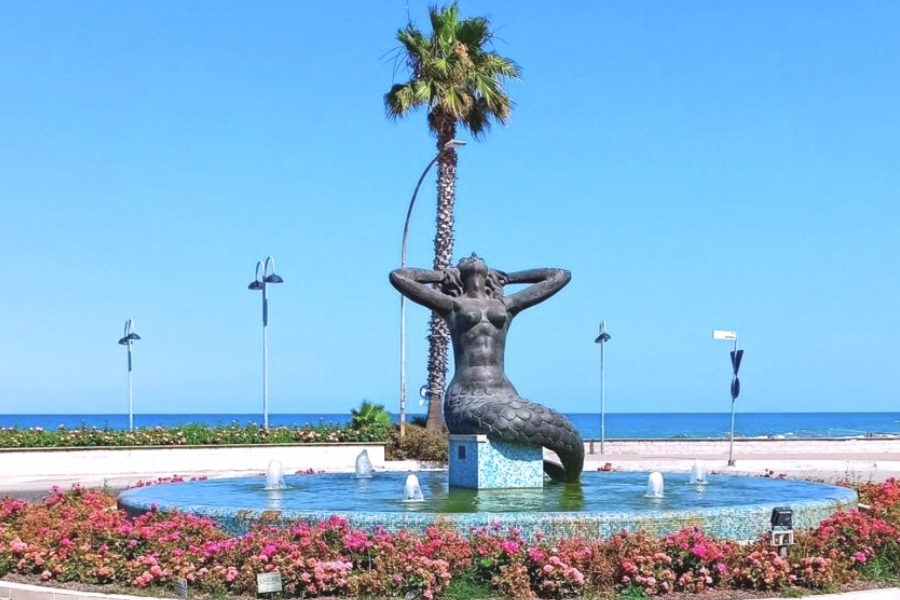
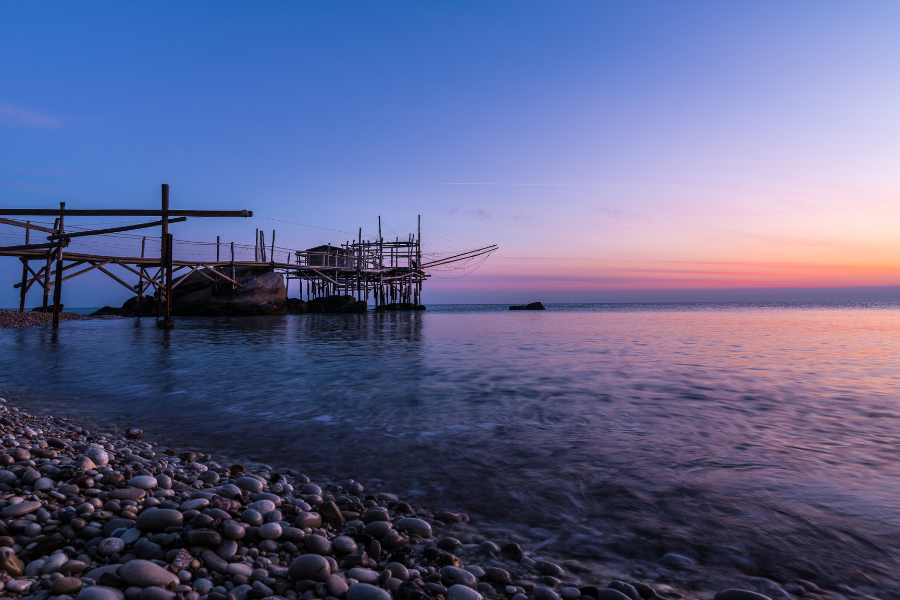
Costa dei Trabocchi
The Trabocchi Coast is a picturesque coastal area located between Ortona and Vasto. The coast is named after the "trabocchi", ancient wooden fishing shacks, anchored to rocks or cliffs over the sea.
The trabocchi are considered one of the oldest fishing methods in the world, its origin seems to date back to the times of the Fenicians. One of the first documents that attests the presence of the trabocchi in this stretch of coast dates back to the fifteenth century: it is a religious work about the life of Fra Pietro da Morrone who later became Pope Celestine V.
Described as "Il trionfo della Morte", by the writer Gabriele D'Annunzio "machines that seems to have their own life", the trabocchi are considered one of Abruzzo’s symbols thanks to their millenary history as well as their beauty.
Lago di Scanno
Lake Scanno is nestled between the mountains of the National Park of Abruzzo, Lazio and Molise. It originated from an ancient landslide, from Mount Genzana, which blocked the course of the river Tasso, between 12.820 and 3.000 years ago.
The real uniqueness of the lake is its heart shape, visible from specific panoramic points.
The picturesque village of Scanno, located on the shores of the lake, is not to be missed. With its stone houses and local traditions still alive, it offers an authentic and charming atmosphere. Here you can immerse yourself in the local culture, visit the Church of Santa Maria della Valle and taste the culinary specialties of Abruzzo in traditional restaurants.
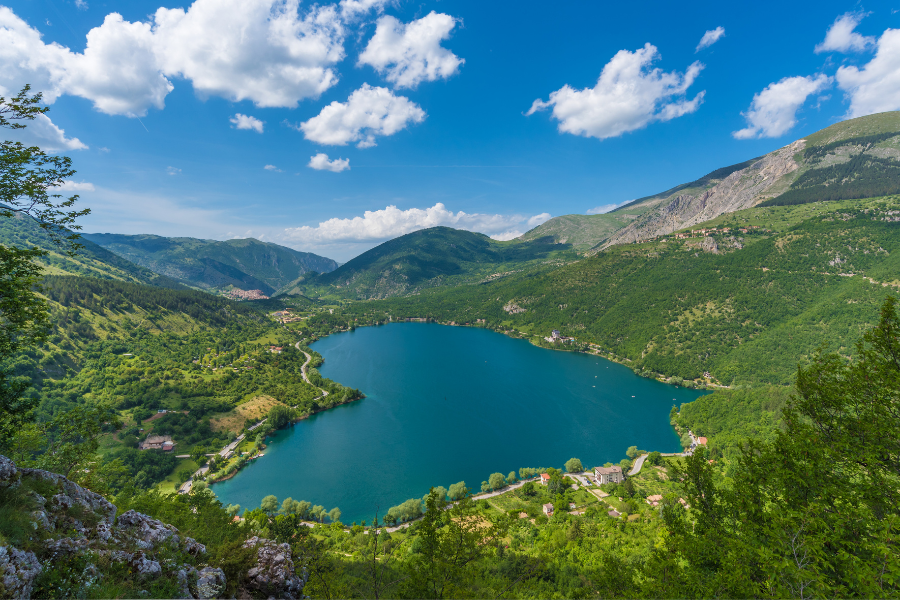
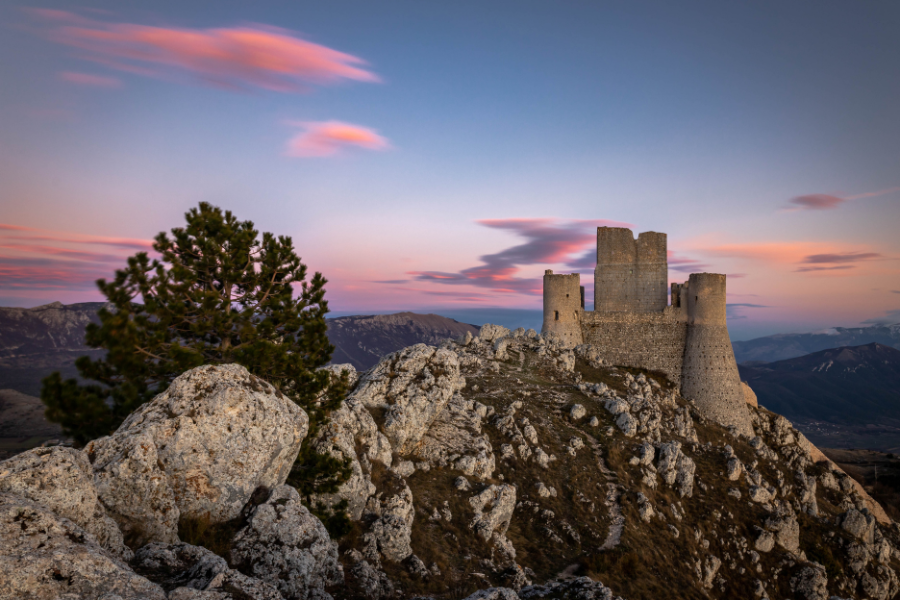
Rocca Calascio
Rocca Calascio is an ancient 10th century castle, considered the tallest castle in Italy.
Located in the Gran Sasso and Monti della Laga National Park, it is one of the most fascinating and suggestive destinations in the area.
The castle, at 1,460 meters above sea level, offers a spectacular panoramic view of the surrounding mountains.
The area surrounding the Rocca Calascio also offers numerous hiking and trekking options.
The nearby town of Santo Stefano di Sessanio, located a few kilometers from Rocca Calascio, deserves a visit. This charming medieval village has been carefully restored and declared one of the "most beautiful villages in Italy".
Valle dell'Orfento
The Orfento Valley is one of the most fascinating and uncontaminated valleys of the Central Apennines, rich in biodiversity and breathtaking landscapes.
One of the most famous landmarks in the Orfento Valley is the Riserva Naturale Orfento.
This reserve was established to protect the valley’s unique ecosystem, home to many plant and animal species. Several species of birds, such as the peregrine falcon and the golden eagle, as well as mammals such as the Apennine wolf and the Abruzzo chamois are to be found on the reserve.
The Orfento Valley also offers several outdoor activities for visitors.
You can go hiking, trekking, mountain biking and birdwatching along the trails.
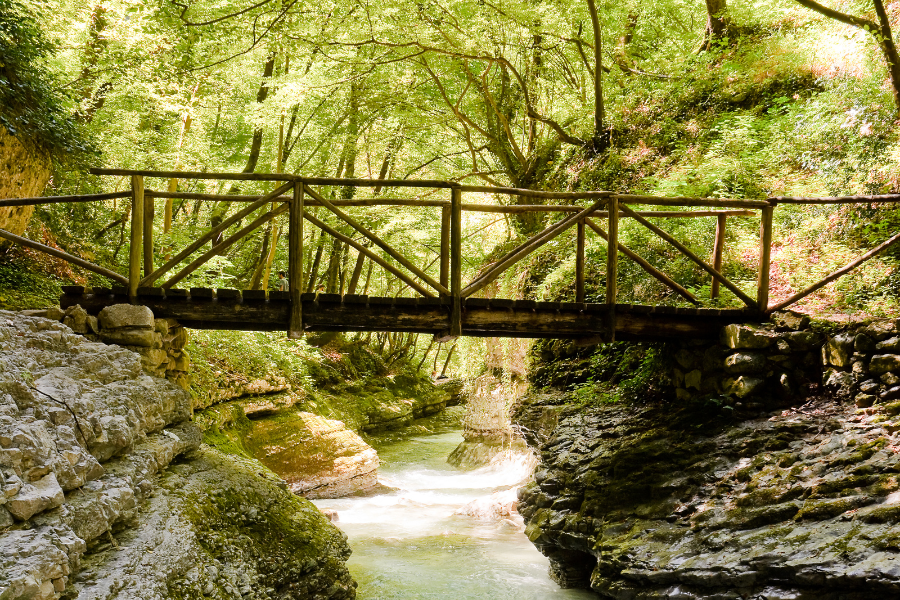
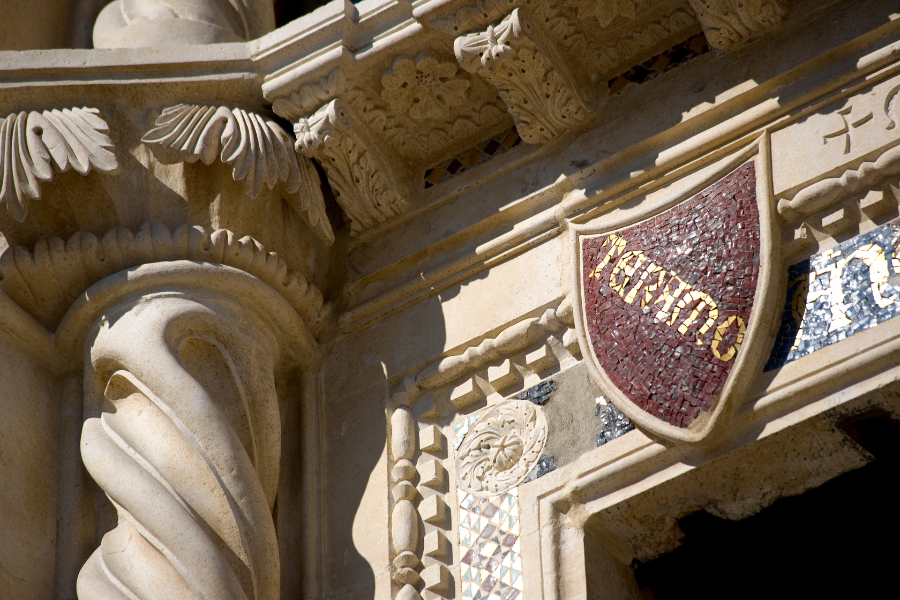
Teramo
Teramo is a city with truly ancient origins, dating back to III-II B.C. as revealed by various archaeological finds found over the centuries.
Nestled between the Adriatic Sea and the Gran Sasso, the city combines a rich cultural heritage with an enchanting landscape, thanks to the proximity of the National Park of the Gran Sasso.
One of the main attractions of Teramo is its historic centre, well preserved, perfect for a visit on foot.
Thes streets, picturesque squares, numerous churches, historic buildings dating back to different historical periods and archaeological excavations dating back to the Roman era, make for a charming and suggestive atmosphere.
Castelli
Castelli is a charming medieval village. This picturesque village, located at the foot of the Gran Sasso, is renowned for its tradition and historical and artistic heritage.
One of the main attractions of Castelli is its ancient ceramic tradition, which dates to the 15th century. Even today, the town is famous for its artistic ceramics, with unique designs, bright colours and master craftsmanship.
You can visit the workshops and shops, to admire the craftsmanship and buy authentic ceramic pieces.
The historic centre of Castelli is a maze of narrow streets, hidden courtyards and ancient stone buildings. It is a pleasure to walk through its streets, full of picturesque corners and well-preserved medieval architecture.
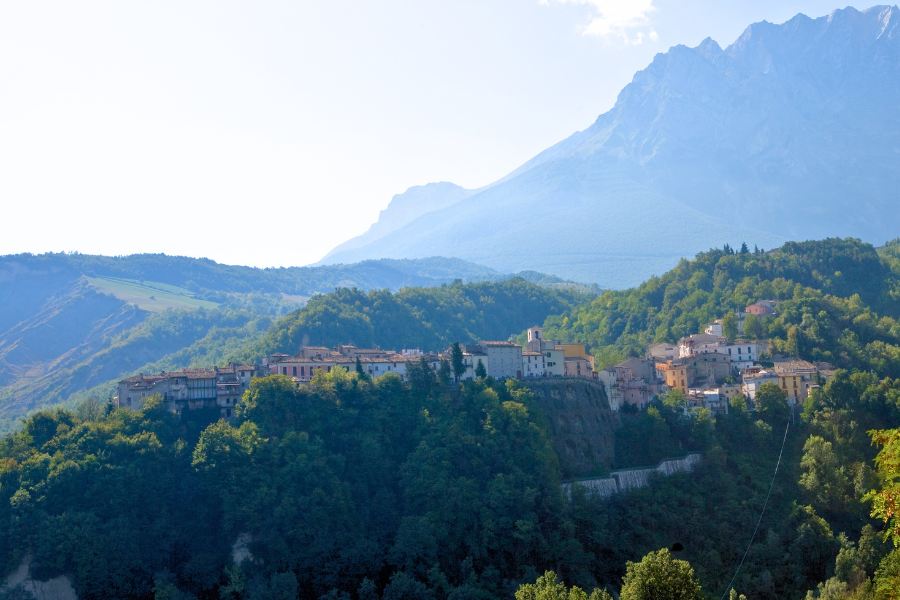
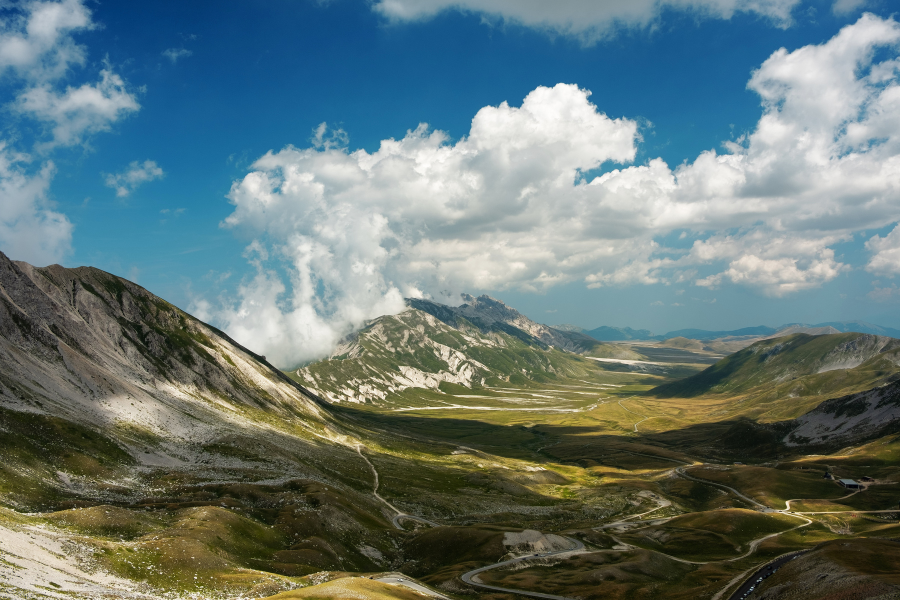
Campo Imperatore
Campo Imperatore is a vast plateau, of glacial and karst-alluvial origin, located in the heart of the Gran Sasso National Park and the Monti della Laga.
Also known as "The Little Tibet", attributed by the mountaineer Fosco Maraini who saw many morphological features like the famous Tibetan plateau in the Abruzzo plateau.
One of the most interesting ways to explore Campo Imperatore is hiking or mountain biking. There are numerous trails that lead to spectacular and picturesque views.
Campo Imperatore is also a paradise for ski enthusiasts.
During the winter, the plain turns into a ski resort with several ski slopes for both beginners and experienced skiers.


